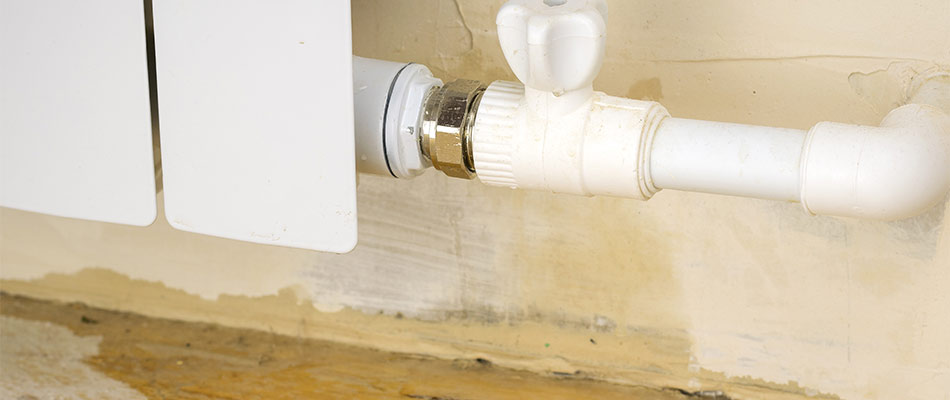Just about everyone will have their own individual theory when it comes to Leaking water lines.

Early detection of leaking water lines can minimize a potential catastrophe. Some tiny water leakages may not be visible.
1. Analyze the Water Meter
Every residence has a water meter. Checking it is a guaranteed manner in which assists you find leakages. For starters, shut off all the water sources. Ensure nobody will certainly flush, utilize the faucet, shower, run the cleaning equipment or dish washer. From there, most likely to the meter and watch if it will alter. Given that no one is using it, there need to be no activities. That indicates a fast-moving leak if it moves. Similarly, if you spot no changes, wait an hour or 2 and inspect back once again. This indicates you might have a sluggish leakage that can also be below ground.
2. Inspect Water Usage
If you spot abrupt adjustments, despite your consumption being the same, it indicates that you have leakages in your plumbing system. An unexpected spike in your expense indicates a fast-moving leakage.
Meanwhile, a steady increase on a monthly basis, despite the exact same routines, shows you have a slow leakage that's additionally slowly escalating. Call a plumber to extensively inspect your home, particularly if you really feel a warm location on your floor with piping underneath.
3. Do a Food Coloring Examination
When it comes to water consumption, 30% comes from commodes. If the shade somehow infiltrates your bowl throughout that time without flushing, there's a leak in between the container and also bowl.
4. Asses Exterior Lines
Do not forget to check your exterior water lines also. Must water leak out of the connection, you have a loosened rubber gasket. One small leakage can lose tons of water and increase your water expense.
5. Check as well as Evaluate the Circumstance
House owners ought to make it a behavior to inspect under the sink counters and also inside cupboards for any type of bad odor or mold and mildew growth. These 2 warnings suggest a leakage so prompt attention is needed. Doing routine assessments, even bi-annually, can save you from a major trouble.
Extra notably, if you know your residence is currently old, keep a watchful eye on your heaters, hoses, pipelines etc. Check for discolorations and also weakening as a lot of home appliances as well as pipelines have a life expectancy. They will certainly also normally wear away due to tear and also use. If you presume dripping water lines in your plumbing system, do not wait on it to escalate. Call a professional plumber as soon as possible so you don't wind up with a dreadful mess in your home.
Early discovery of dripping water lines can mitigate a potential catastrophe. Some little water leaks may not be visible. Checking it is a guaranteed means that assists you uncover leaks. One little leakage can waste lots of water and also surge your water costs.
If you believe leaking water lines in your plumbing system, don't wait for it to escalate.
WARNING SIGNS OF WATER LEAKAGE BEHIND THE WALL
PERSISTENT MUSTY ODORS
As water slowly drips from a leaky pipe inside the wall, flooring and sheetrock stay damp and develop an odor similar to wet cardboard. It generates a musty smell that can help you find hidden leaks.
MOLD IN UNUSUAL AREAS
Mold usually grows in wet areas like kitchens, baths and laundry rooms. If you spot the stuff on walls or baseboards in other rooms of the house, it’s a good indicator of undetected water leaks.
STAINS THAT GROW
When mold thrives around a leaky pipe, it sometimes takes hold on the inside surface of the affected wall. A growing stain on otherwise clean sheetrock is often your sign of a hidden plumbing problem.
PEELING OR BUBBLING WALLPAPER / PAINT
This clue is easy to miss in rooms that don’t get much use. When you see wallpaper separating along seams or paint bubbling or flaking off the wall, blame sheetrock that stays wet because of an undetected leak.
BUCKLED CEILINGS AND STAINED FLOORS
If ceilings or floors in bathrooms, kitchens or laundry areas develop structural problems, don’t rule out constant damp inside the walls. Wet sheetrock can affect adjacent framing, flooring and ceilings.
https://www.servicemasterbyzaba.com/blog/how-to-detect-water-leakage-in-walls/

As a serious reader on Detecting hidden plumbing leaks, I think sharing that piece was really useful. I beg you take the opportunity to promote this blog post if you enjoyed it. I recognize the value of reading our article about Locating water leaks.